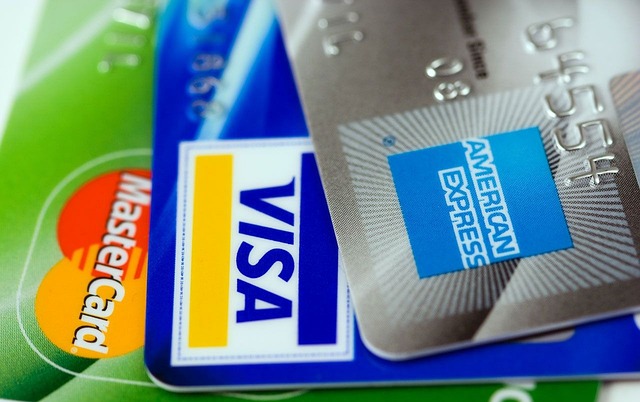Financial stability doesn’t happen overnight – It’s built step by step, starting with a strong foundation. Whether you’re just starting your financial journey or looking to strengthen your current situation, these steps will set you up for long-term success and peace of mind.
1. Assess Your Current Financial Situation
Before you can improve your finances, you need to understand where you stand.
Create a Budget
Start by listing all sources of income, including wages, commissions, government benefits, investment income (non-reinvested), and any other earnings you receive.
Next, break down your expenses:
- Fixed Expenses: These include housing (rent/mortgage), utilities, transportation, groceries, loan payments, credit card interest, insurance, and taxes.
- Discretionary Expenses: These cover non-essential spending like dining out, travel, entertainment, and subscriptions.
To track your spending and organize your budget, there are plenty of tools available, from simple spreadsheets to advanced budgeting apps. Personally, I use and highly recommend Monarch Money. After testing various apps, I’ve found Monarch to be the easiest to use for syncing accounts and categorizing expenses. Use my referral link to get an extended 30-day free trial. It’s a great way to get started on your budgeting journey!
Check out How to Start Budgeting for Beginners: A Step-by-Step Guide to learn everything you need to know about creating your first budget..

Track Your Spending
Start by reviewing your bank and credit card statements from the past 1–3 months to identify spending patterns. This will give you a clear picture of where your money is going and help you spot areas for improvement.
Begin with your discretionary expenses, as these often have the most room for adjustment. The two areas I recommend looking at first are Subscriptions and Dining Out. Also check out Proven Strategies To Save Money for other ways to lower your expenses.
Subscriptions
Subscriptions are frequently overlooked because they’re automatically debited. Take the time to review all recurring charges and ask yourself:
- Do I use this service regularly?
- Is this subscription adding value to my life?
Common culprits include:
- Free Trials: That “free trial” you forgot to cancel can quietly turn into a paid subscription.
- Streaming Services: Are you using all the platforms you’re paying for? Consider cutting back to just one or two.
- Magazines or Apps: If you rarely use them, it’s time to unsubscribe.
By eliminating unnecessary subscriptions, you can free up a surprising amount of money over time. Apps like Rocket Money, can help you track and cancel subscriptions with ease.
Taking control of your spending starts with awareness, and examining your subscriptions is an easy first step to make meaningful changes!
Dining Out
Eating out is often one of the biggest discretionary expenses, and it’s an area where small changes can lead to significant savings. Start by reviewing how often you dine out and how much you spend each time. Here are some practical tips to help reduce your dining out expenses:
Identify Patterns
- Are you frequently grabbing coffee, ordering takeout, or dining at restaurants?
- Do you tend to overspend on impulse purchases, like appetizers or drinks?
Set Limits
Decide how often you want to dine out each month and establish a budget for those outings. By setting clear limits, you can still enjoy the experience of eating out without breaking the bank.
Look for Savings
- Discounts and Deals: Use apps like Groupon or find local deals to save on dining out.
- Happy Hours: Take advantage of reduced prices on food and drinks during happy hours.
- Split Meals: If portions are large, consider sharing an entrée or skipping dessert.
Cook at Home More Often
Replacing a few meals out with home-cooked ones can make a huge difference. Meal prepping or planning simple, budget-friendly recipes can save you both time and money while giving you more control over what you eat.
By being mindful of your dining habits and finding a balance between eating out and cooking at home, you can enjoy occasional treats while keeping your finances on track!
Understand Your Debts
Start by listing all your debts, including credit cards, student loans, personal loans, and home equity lines of credit (HELOCs).
For each debt, record the following:
- Balance: How much you owe.
- Interest Rate: The cost of borrowing.
- Minimum Monthly Payment: The amount required to stay current.
Having these details at your fingertips will be crucial for tackling your debts effectively in Step 3!
2. Establish an Emergency Fund

An emergency fund is your financial safety net, protecting you from unexpected expenses like car repairs, medical bills, or sudden job loss.
- Why It’s Important: Without an emergency fund, you may need to rely on high-interest debt during tough times, which can make financial setbacks even worse.
- How Much to Save: Start with a goal of $1,000. Once you reach that milestone, aim to save 3–6 months’ worth of living expenses to provide comprehensive security.
- Where to Keep It: Store your emergency fund in a high-yield savings account, where it remains safe, accessible, and earns competitive interest. Online banks typically offer higher APY rates than traditional banks or credit unions.
I personally use Wealthfront for both my checking and savings accounts. They offer one of the most competitive APYs on the market and provide enhanced features like customizable categories to help organize your money.
Use my referral link to get an additional 0.50% APY boost for 3 months – It’s a great way to maximize your savings while building your financial safety net!
3. Tackle High-Interest Debt
Debt can be a major obstacle to financial stability, especially if it comes with high interest rates.
Prioritize Debt Repayment
There are two popular methods for tackling debt, each with its own approch and advantages. Here’s a breakdown to help you decide which approach works best for you:
Debt Avalanche: Focuses on paying off high-interest debt first.
- Pro: Saves the most money on interest over time by targeting high-cost debt.
- Con: It can take longer to pay off your first balance, which may make it harder to stay motivated.
Debt Snowball: Focuses on paying off the smallest debts first.
- Pro: Provides quick wins by allowing you to eliminate small debts faster, giving a sense of accomplishment and boosting motivation.
- Con: May cost more in interest overall because it doesn’t prioritize high-interest debts.
Which Method Should You Choose?
If you’re disciplined and focused on maximizing savings, the debt avalanche method is your best bet. However, if you’re motivated by seeing quick progress, the debt snowball method might be more effective for you.
Ultimately, the most important thing is to stick with your plan. The goal is to eliminate debt entirely, setting you up for long-term financial success. Choose the method that keeps you committed and moving forward!
Consider Consolidation Options
You can explore balance transfer credit cards or personal loans with lower interest rates to save money and simplify payments.
However, I caution against relying on this strategy unless you’ve addressed the underlying habits that led to the debt in the first place. Consolidation doesn’t resolve overspending and could negatively impact your credit score.
That said, if you are committed to fixing your spending habits and sticking to a repayment plan, this can be a useful tool. If you choose this route, proceed carefully and ensure it aligns with your long-term financial goals.
4. Start Saving for the Future
Saving isn’t just about having a cushion for emergencies—it’s about creating a financial roadmap to reach your short- and long-term goals. Whether it’s funding your dream retirement, planning for a big trip, or upgrading your home, a solid savings strategy will help you get there.

Retirement Savings
Your future self will thank you for prioritizing retirement savings today. Begin by contributing to an employer sponsored retirement plan like 401(k) or 403(b), especially if your employer offers a matching program. Employer matches are essentially free money—don’t leave it on the table!
If you’re self-employed or don’t have access to an employer sponsored plan, consider opening an IRA or a solo 401(k). Focus on contributing consistently, even if it’s a small amount to start. Over time, compound interest will help your savings grow significantly.
Short-Term Goals
Savings isn’t just for the distant future; it’s also about the things you want to achieve in the next few years. Examples of short-term goals include:
- Taking a vacation.
- Purchasing a car.
- Renovating your home.
To make saving for multiple goals easier, I recommend using sinking funds. These are separate savings accounts (or sub-accounts) for each goal, allowing you to allocate specific amounts to each one. For instance, you can open accounts labeled “Vacation Fund” or “New Car Fund” to track your progress toward individual goals. Many online banks including Wealthfront offer customizable categories to help you stay organized.
Automate Savings
Saving money doesn’t have to be a chore. Automate the process by setting up recurring transfers from your checking account to savings or retirement accounts. Here’s how automation helps:
- Consistency: Regular contributions ensure you stay on track with your goals.
- Convenience: You’ll never have to worry about remembering to transfer funds manually.
- Pay Yourself First: Automating savings makes it a priority rather than an afterthought.
Start small if needed—even $20 a week adds up over time. Increase your contributions whenever you can, such as after a raise or once a debt is paid off.
By focusing on retirement savings, short-term goals, and automation, you’re laying the groundwork for a brighter financial future. Start today, and watch your goals become achievable milestones!
5. Protect Yourself and Your Assets
Building a strong foundation isn’t just about saving and investing—it’s also about protecting what you’ve built.
- Insurance: Ensure you have adequate health, life, and disability insurance. These provide crucial protection against financial disasters.
- Estate Planning: Create a will and designate beneficiaries for your accounts. It’s an essential step, even if you think you’re too young to need it.
- Track Progress: Regularly review your budget, savings, and goals. Adjust as needed to stay on track.
Tools and Resources
Here are some tools and resources to take advantage of:
- Templates: Download free budgeting templates online or download my Personal Spending Plan for a ready-to-use solution to track your income and expenses.
- Apps: Try tools like Monarch Money or YNAB.
- Books: Read “The Total Money Makeover“ by Dave Ramsey or “I Will Teach You to Be Rich“ by Ramit Sethi.
- Debt Payoff Calculators: https://www.calculator.net/debt-payoff-calculator.html or https://www.creditkarma.com/calculators/credit-cards/debt-repayment
- Compound Interest Calculator: https://www.investor.gov/financial-tools-calculators/calculators/compound-interest-calculator
- List of the best high-yield savings accounts: https://www.bankrate.com/banking/savings/best-high-yield-interests-savings-accounts/
Key Takeaways
Building a solid financial foundation takes time, but every small step you take brings you closer to stability and freedom. Start with assessing your current situation, then tackle one step at a time. Remember, progress is more important than perfection.
Want more tips on building wealth, maximizing your travel, and reaching your financial goals? Join my free newsletter for actionable advice and exclusive strategies delivered straight to your inbox. Subscribe now and take control of your financial future!
Phillip founded Hacking Your Finances after reaching financial independence in 2024 and leaving his corporate career to follow his passion for helping others optimize their finances. Combining his love for personal finance and travel hacking with years of professional expertise, he provides practical strategies to help readers maximize credit card rewards and achieve their financial goals.


